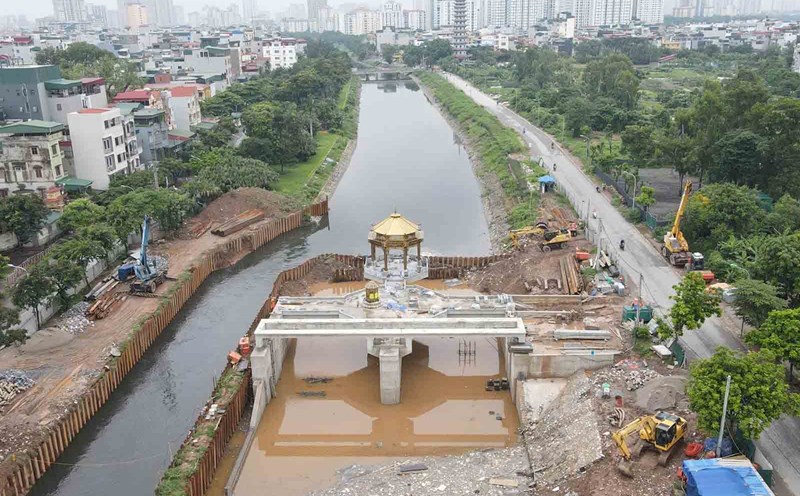Ceramic stele
The pottery cage (Dong Son culture) is an artifact in the private collection of Pham Gia Chi Bao, recognized as a national treasure in 2024.
The ceramic beget is a personal collection of actor Pham Gia Chi Bao. The antique is about 2,000 years old, belonging to Dong Son culture, recognized as a national treasure in 2024. According to Mr. Bao, pottery drums are of great value, because during the Dong Son period, most people only knew about bronze drums.
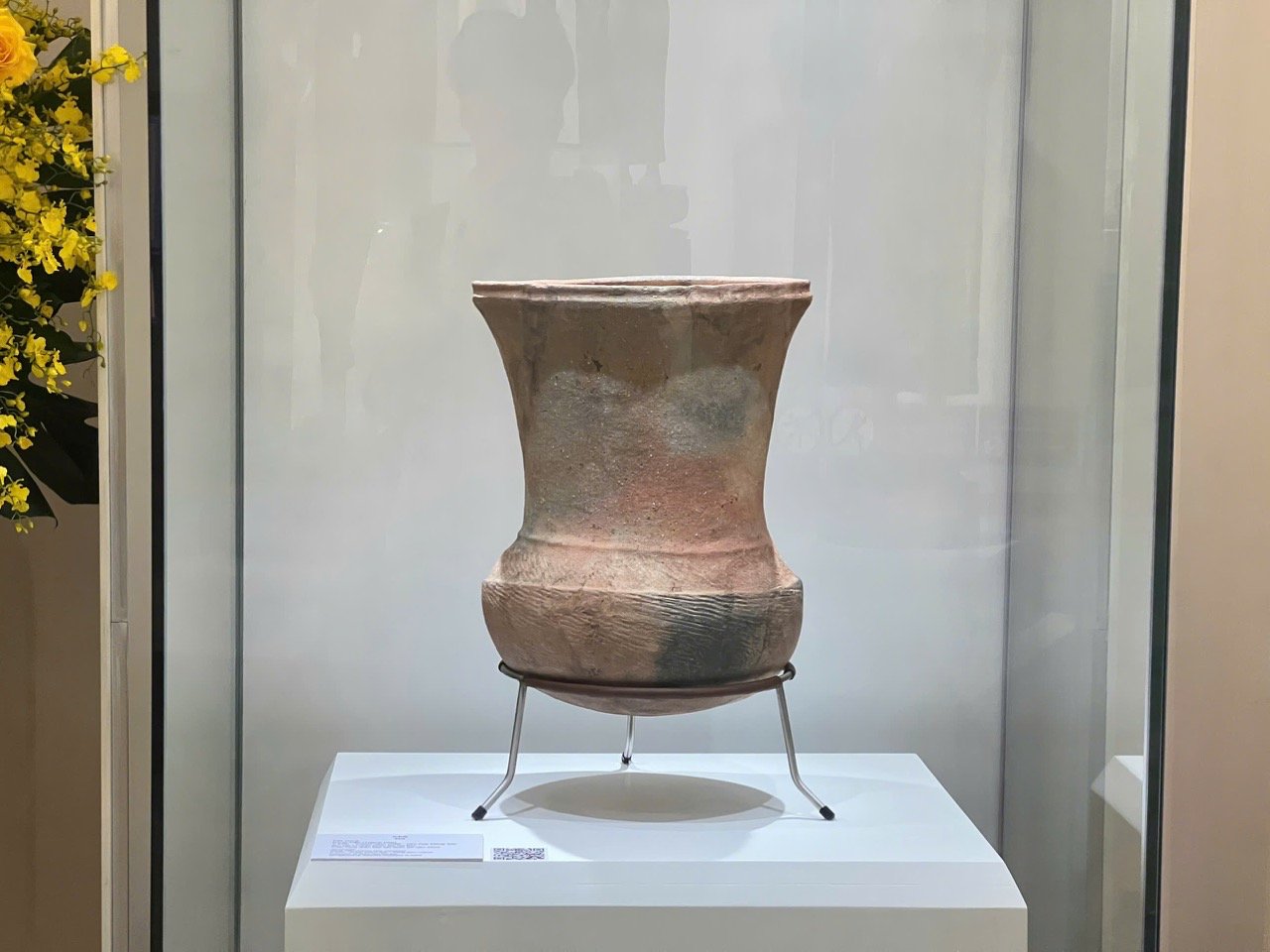
A steamer is a device for cooking sticky rice or steaming food, consisting of a lower layer containing water and a lower layer for placing food on top. The stool is 40cm high, 28.5cm in diameter, and weighs 4.2kg. The stewed stew has a flat, flat back, round belly, clearly different from cooking pots or kitchenware.
Dong Duong Buddha statue
The Dong Duong Buddha statue (Champa culture) dates back to the 8th - 9th century. The artifact belongs to the Ho Chi Minh City Historical Museum, recognized as a national treasure in 2012.
The Dong Duong Buddha statue was found in Quang Nam in 1911, about 1,200 years old, belonging to the Champa culture. The statue is made of brass, 120cm high, weighing 120kg, depicting the Buddha teaching.
The statue is related to a period when Buddhism in Champa flourished, that was the period of the Indravarman II Dynasty, also known as the "Dong Duong Dynasty" or "Buddhist Dynasty".
Statehood of Goddess devi
The statue of the goddess devi (Champa culture) dates back to the 10th century. The artifact belongs to the Ho Chi Minh City Historical Museum, recognized as a national treasure in 2012.
The statue is 38.5cm high, and weighs 2 kg, dating back to the 10th century, discovered in 1911 in Quang Nam in a small temple. According to the researchers' documents, this is a rare portrait of an championed Indian goddess.
The saffron statue has long, curved eyebrows, big eyes, a slightly smiling mouth, and hair turned into a high, tower-shaped ball. The artifact was chosen by many countries around the world to display and introduce Champa culture.
Publishing "Luong Tai Hau Chi Tinh"
The stamp "Luong Tai Hau Chi Tinh" dates back to 1833, an artifact of the Ho Chi Minh City Museum, and was recognized as a national treasure in 2020.
Luong Tai Hau's press was cast in the 14th year of King Minh Mang (1833), made of bronze, 7.35cm high, with a 7cm wide base. This is the seal of the Premier Do Thong, Quoc Quoc Quoc Tran Van Nang.
The print is a rare and unique artifact. This is the first "Award" stamp issued to a high-ranking officer or general, not a royal line. The seal is considered a standard, and after being conferred by the monk, the seal was used as a standard.
printing button "Credit voucher for 5 VND"
The printing gone "5 VND loan voucher", dated 1947, is an artifact of the Ho Chi Minh City Museum, recognized as a national treasure in 2018.
The core is made of bronze, with the image and words of the receipt embossed. On the national emblem of the Democratic Republic of Vietnam, with the words: Democratic Republic of Vietnam - Credit - Five Dong - National Bank of Vietnam - Southern Branch. On the right side of the mold is a rectangular symbol with the number 5 in the center, showing the denomination. The monthly newspaper clearly reflects the financial and monetary struggle in the resistance war against France.
Avalokitesvara Dai Huu Monument
The Avalokitesvara Dai Huu statue (Champa culture) dates back to the 10th century. The artifact belongs to the Ho Chi Minh City Historical Museum, recognized as a national treasure in 2013.
The statue is shown standing, with 4 arms, 2 arms slightly bent back to hold the book, 2 arms in front holding the lotus Binh and the giant orange juice bottle.
Bronze sculptures are a relatively rare material in Champa sculpture. The perfect statue, the slender, heavily decorated and decorated are typical of Avalokitesvara.
The statue of god Surya
The statue of the god Surya (Oc Eo culture) dates back to the 6th - 7th century. The artifact belongs to the Ho Chi Minh City Historical Museum, recognized as a national treasure in 2012.
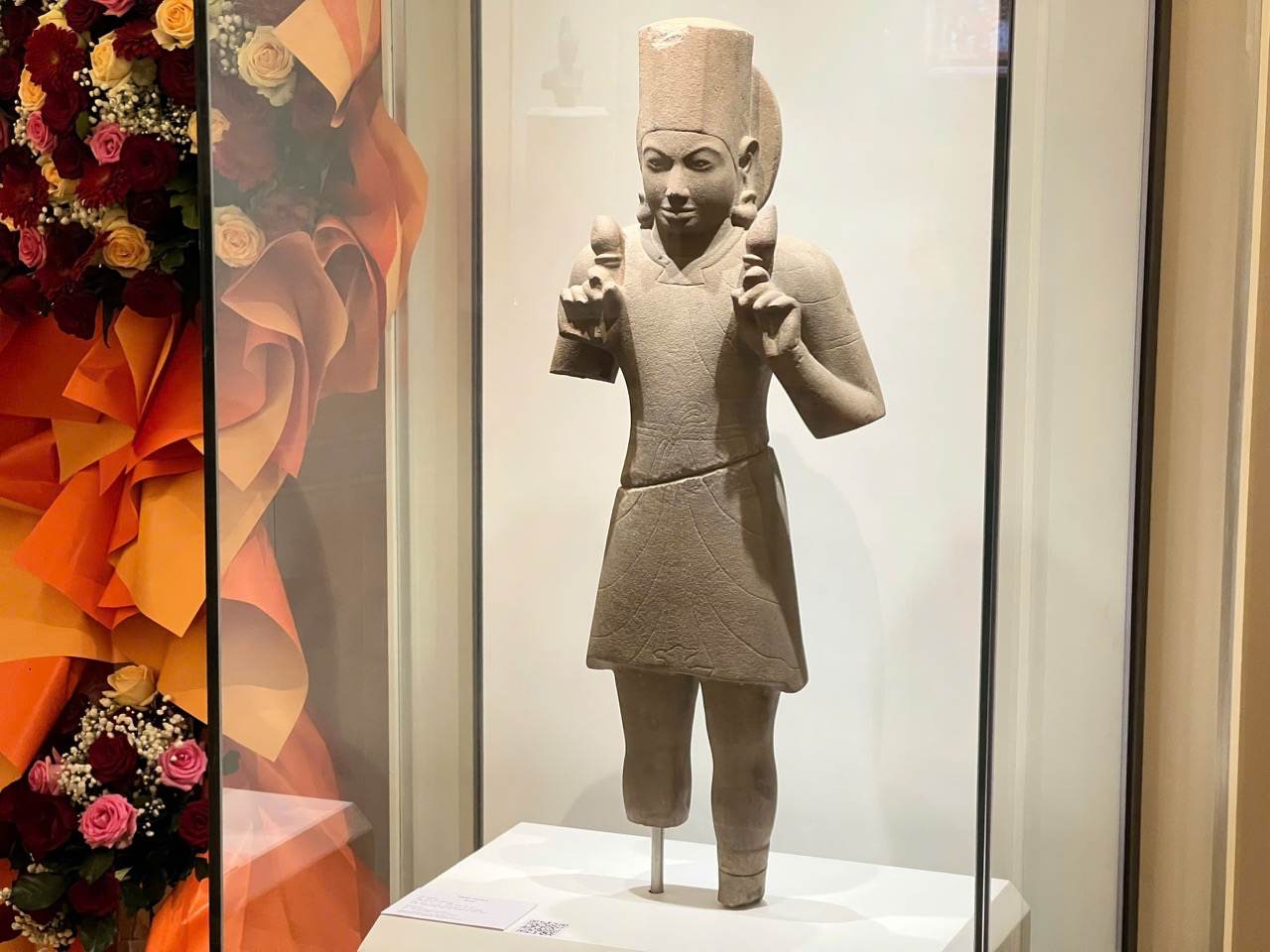
The sandalone statue was discovered in 1928 in An Giang. The male god statue is carved in a standing position, weighing 80kg. Both of these statues are typical of the carving art of the Oc Eo culture.
Son Tho Buddha statue
Son Tho Buddha statue (Oc Eo culture) dating back to the 6th - 7th century. The artifact belongs to the Ho Chi Minh City Historical Museum, recognized as a national treasure in 2018.
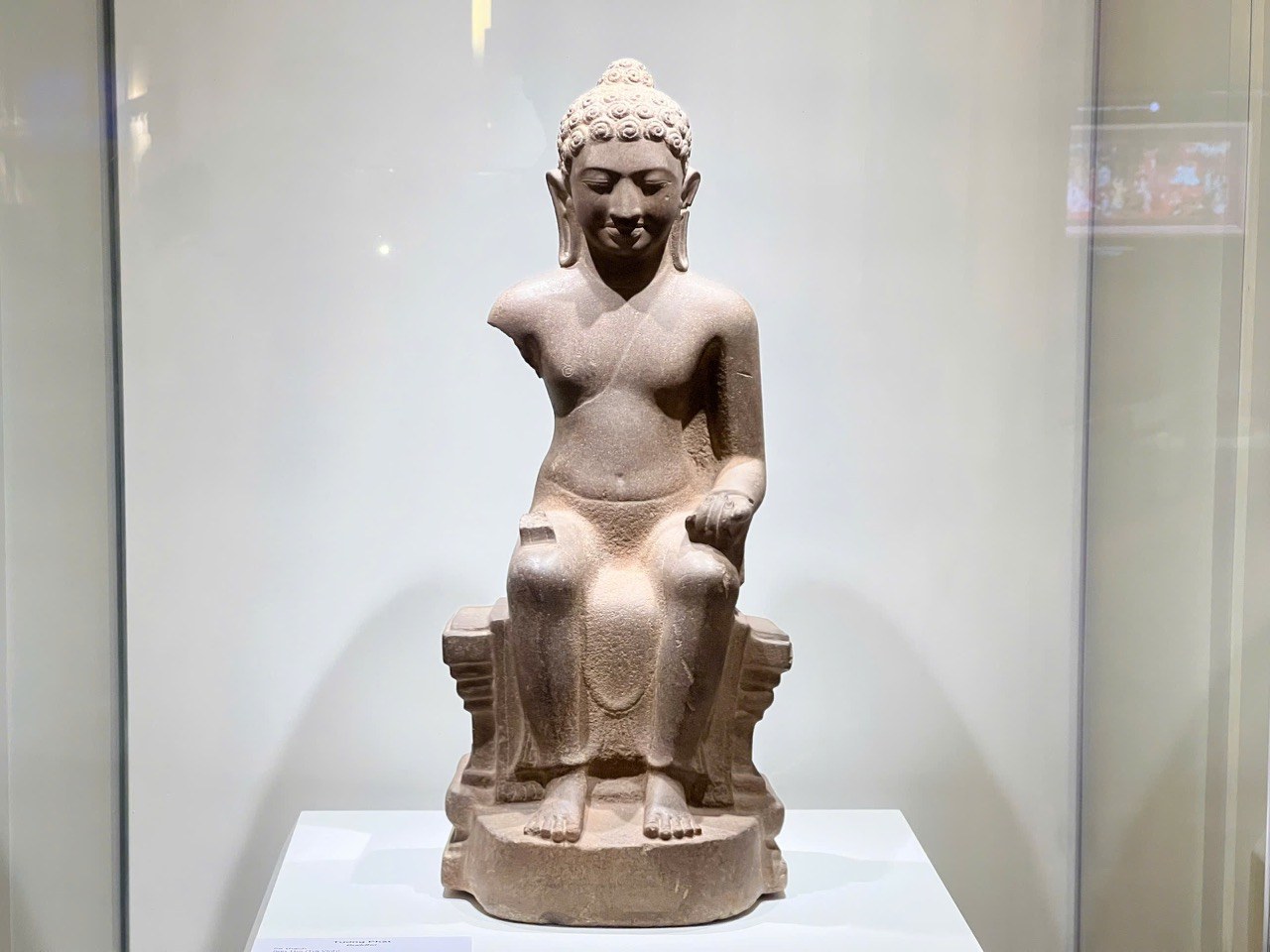
The Son Tho Buddha statue is found at the pagoda of the same name in Tra Vinh, crafted by Phu Nam residents in the 6th - 7th centuries.
59cm high and weighing 80kg, the statue is made of sand stone, depicting Buddha sitting in a position with his feet down in front of the throne.
The statue of Buddha Loi My
The statue of Buddha Loi My (Oc Eo culture) dates back to the 4th - 6th century. The artifact belongs to the Ho Chi Minh City Historical Museum, recognized as a national treasure in 2012.
The Buddha statue is made of solid wood, standing on a lotus platform with many layers, a thin shape, the head is a round raincoat with a pointed pointed top, long ears and shoulders, low shoulders, arms raised across the chest, in a sealing position, wearing a long coat covering the legs to form an arch.
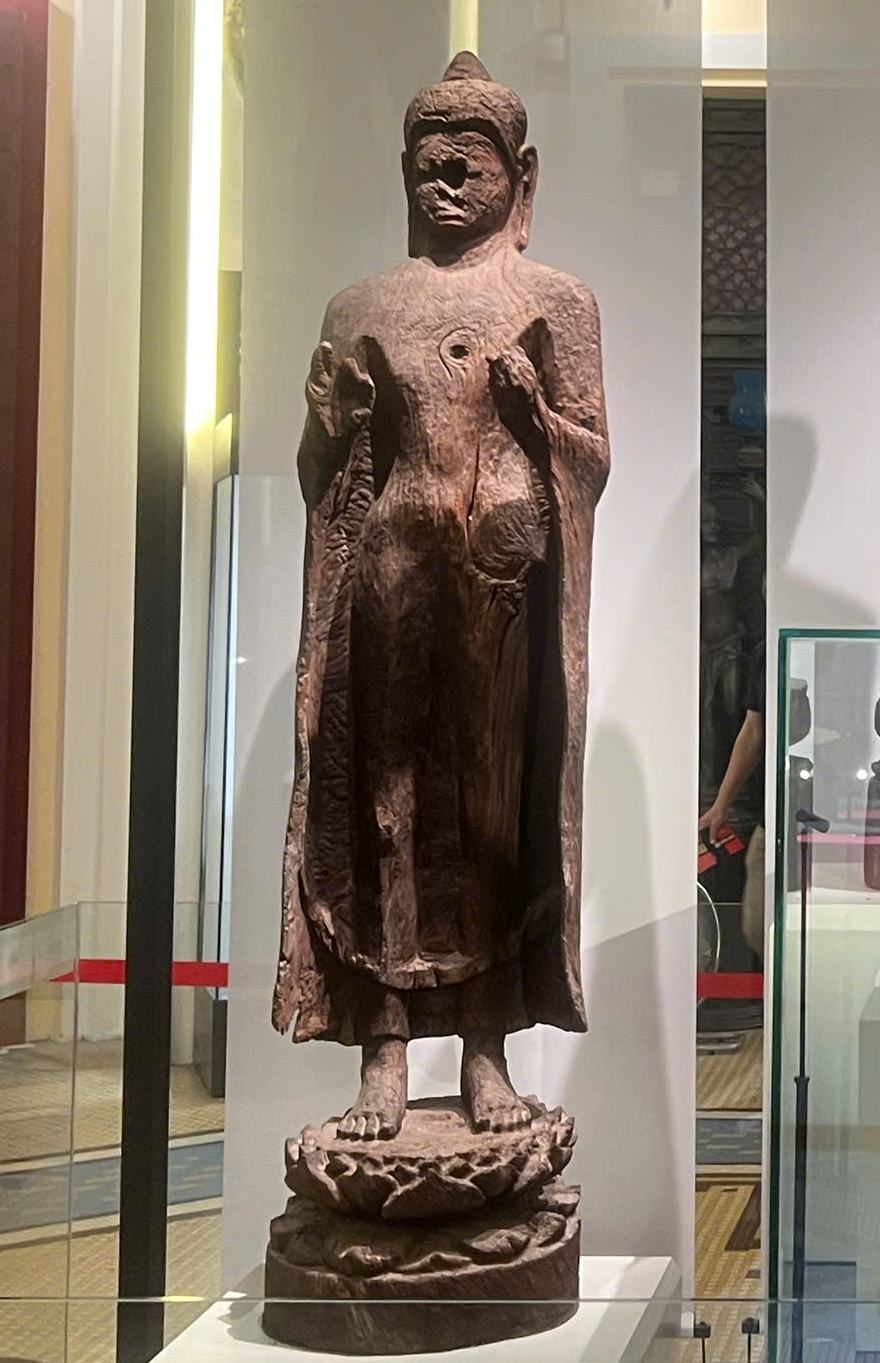
The Buddha statue is carved with a unique "Trai wood" trunk, typical of Southeast Asian Buddhist sculptures, from the early centuries of the Oc Eo Culture, a large statue with typical high aesthetic value of the Oc Eo Culture, especially preserved intact to this day.
Binh Hoa Buddha statue
The statue of Buddha Binh Hoa (Oc Eo culture) dates back to the 3rd - 4th century. The artifact belongs to the Ho Chi Minh City Historical Museum, recognized as a national treasure in 2013.
The wooden Buddha statue made of lentils, standing on a lotus platform, in a slender shape, with unisa on the top, snuggish hair, wearing an open- shouldered coat, holding the edge of the shirt with the left hand, and holding the right hand in a benition position.
This is a unique original artifact with a unique shape, typical of the art of carving statues in Oc Eo culture.
Vishnu Monument
The statue of Vishnu (Oc Eo culture) dates back to the 2nd - 5th century. The artifact belongs to the Ho Chi Minh City Historical Museum, recognized as a national treasure in 2012.
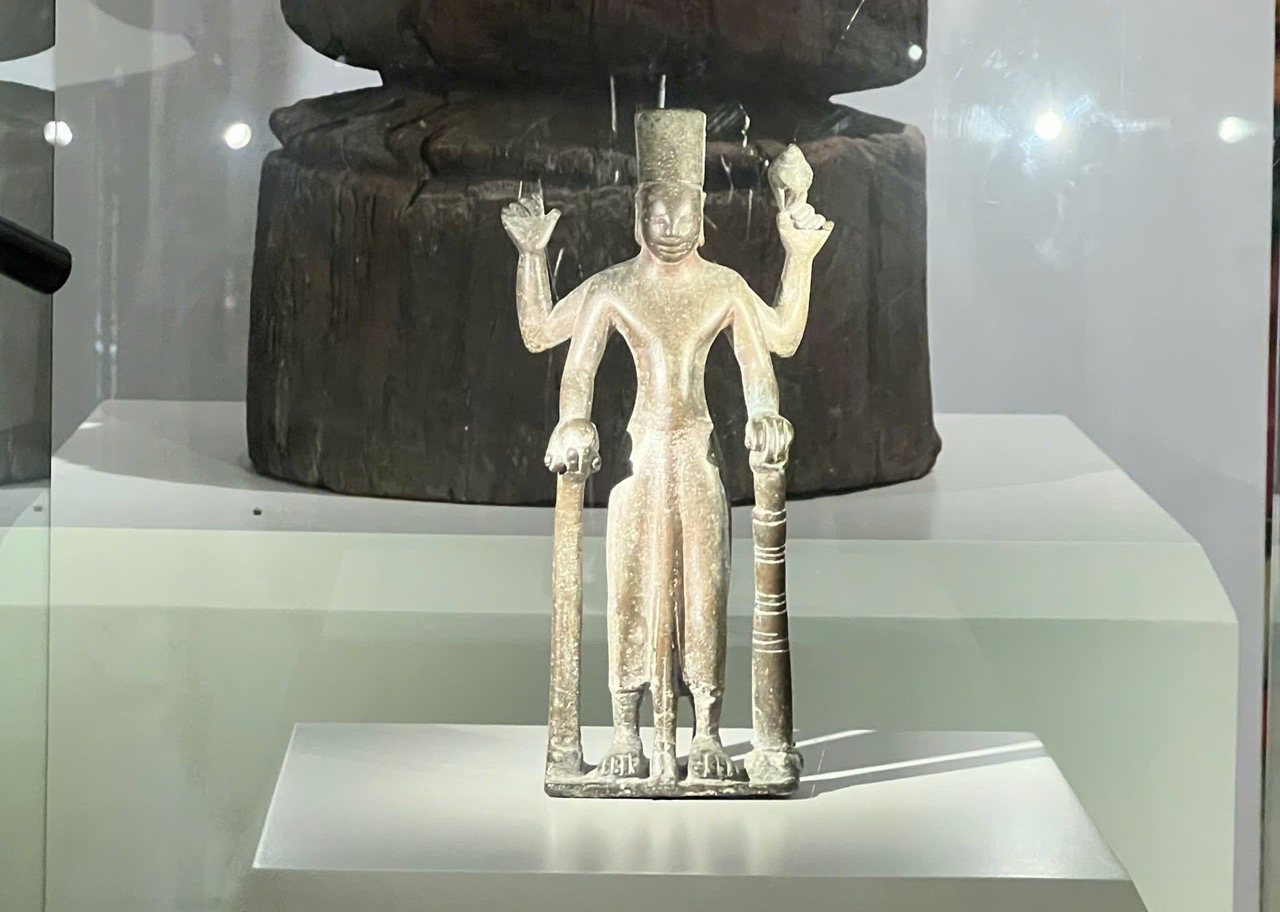
The statue stands on the pedestal, wearing a cylindrical hat at the head. The statue has four arms, two backs, one hand holding a snail shell (Shanka) symbolizing the origin of life, two front arms, right hand holding a ball (Bhu) symbolizing the soil, left hand placed on a long betel tree. The forest is covered with a long dhoti.
The statue is created with a unique balanced and harmonious shape, with aesthetic value, representing the important Hindu god of Oc Eo culture.
The painting "Youth becomes bronze"
The painting "Youth in copper City" by artist Nguyen Sang was sketched in 1967, The artifact belongs to the Ho Chi Minh City Museum of Fine Arts, recognized as a national treasure in 2017.
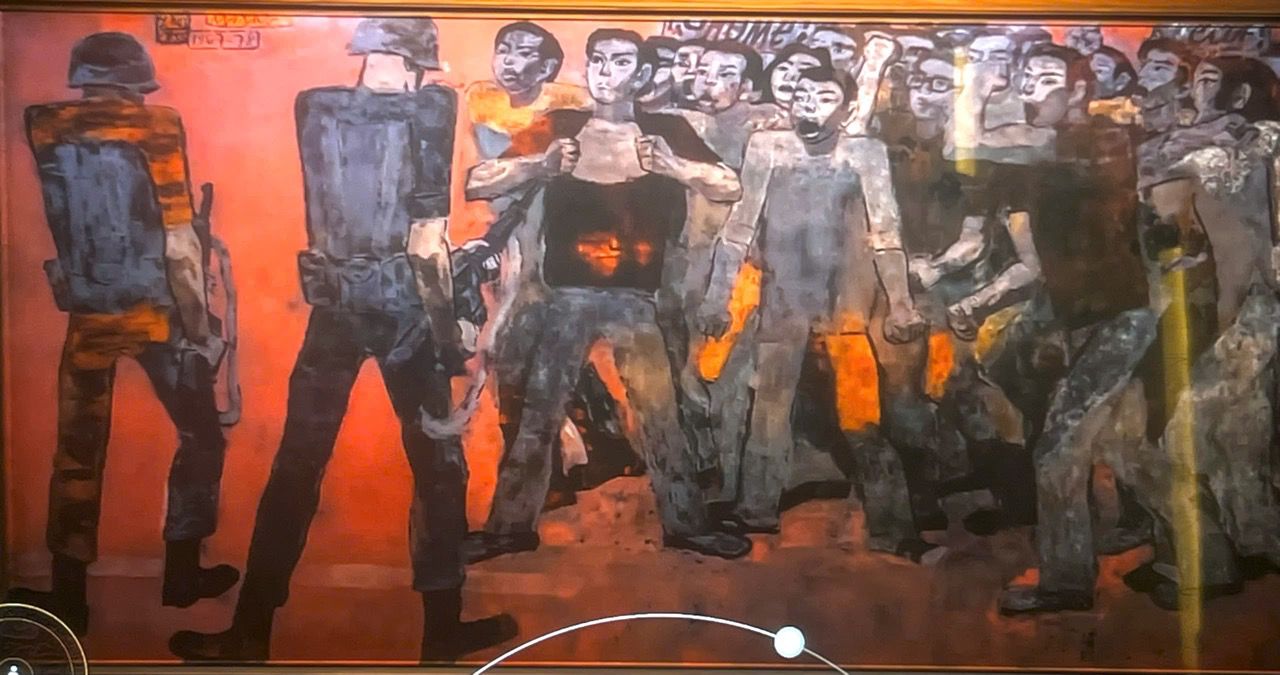
According to documents from the Ho Chi Minh City Museum of Fine Arts, "Youth of the City of Bronze" uses lacquer material, completed in 1978 The original painting depicts the scene of Saigon students protesting against the war in the 1960s, opposing the presence of US soldiers in Vietnam.
Avalokitesvara monument
The Avalokitesvara statue (Oc Eo culture) dates back to the 8th - 9th century. The artifact belongs to the Ho Chi Minh City Historical Museum, recognized as a national treasure in 2013.
Weighing 35kg, with long bunches and a Board of Encles carved with a Buddha statue, carrying many jewelry. The statue has 4 arms, the 2 hands in front of it are holding lotus buds and a giant orange water bottle.
Sa Dec Buddha statue
The Sa Dec Buddha statue (Oc Eo culture) dates back to the 4th century. The artifact belongs to the Ho Chi Minh City Historical Museum, recognized as a national treasure in 2013.
The star-studded Buddha statue, standing on a lotus tower, has 2 floors, a slender shape, a high neck, a flat shoulder, with traces of unisa, curly hair, and traces of a coat extending to the soles of the feet.
The statue of goddess Durga
The Durga Goddess statue (Oc Eo culture) dates back to the 7th - 8th century, and was found in 1908 in Tra Vinh. The artifact belongs to the Ho Chi Minh City Historical Museum, recognized as a national treasure in 2013.
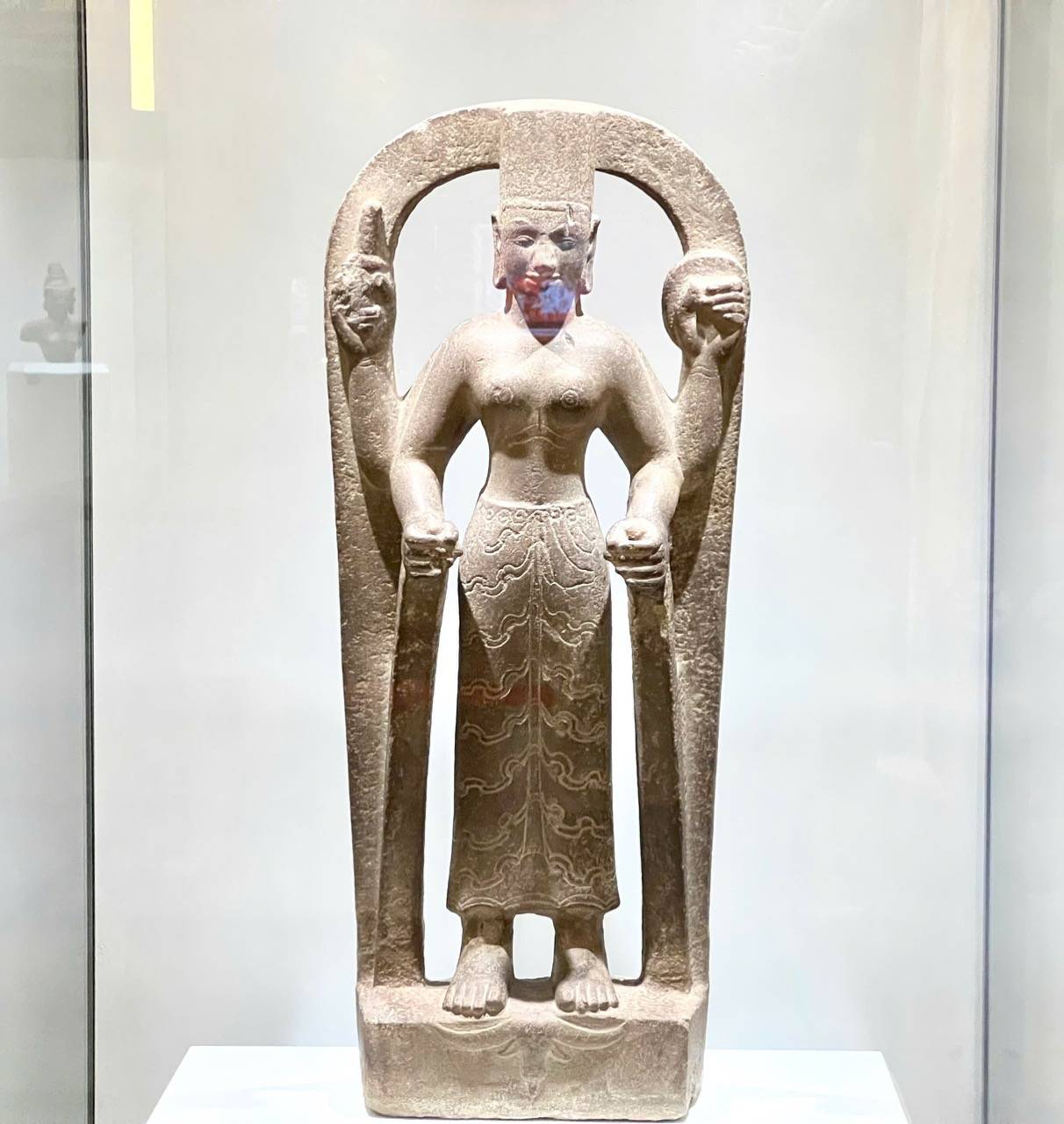
The treasure is made of sandstone, 75cm high and weighs 75kg. The statue stands on the head of a buffalo, symbolizing the male buffalo subdued by goddess Durga, helping people escape from hardship.
Avalokitesvara Hoai Nhon statue
The Avalokitesvara Hoai Nhon statue (Champa culture) dates back to the 8th - 9th century. The artifact belongs to the Ho Chi Minh City Historical Museum, recognized as a national treasure in 2013.
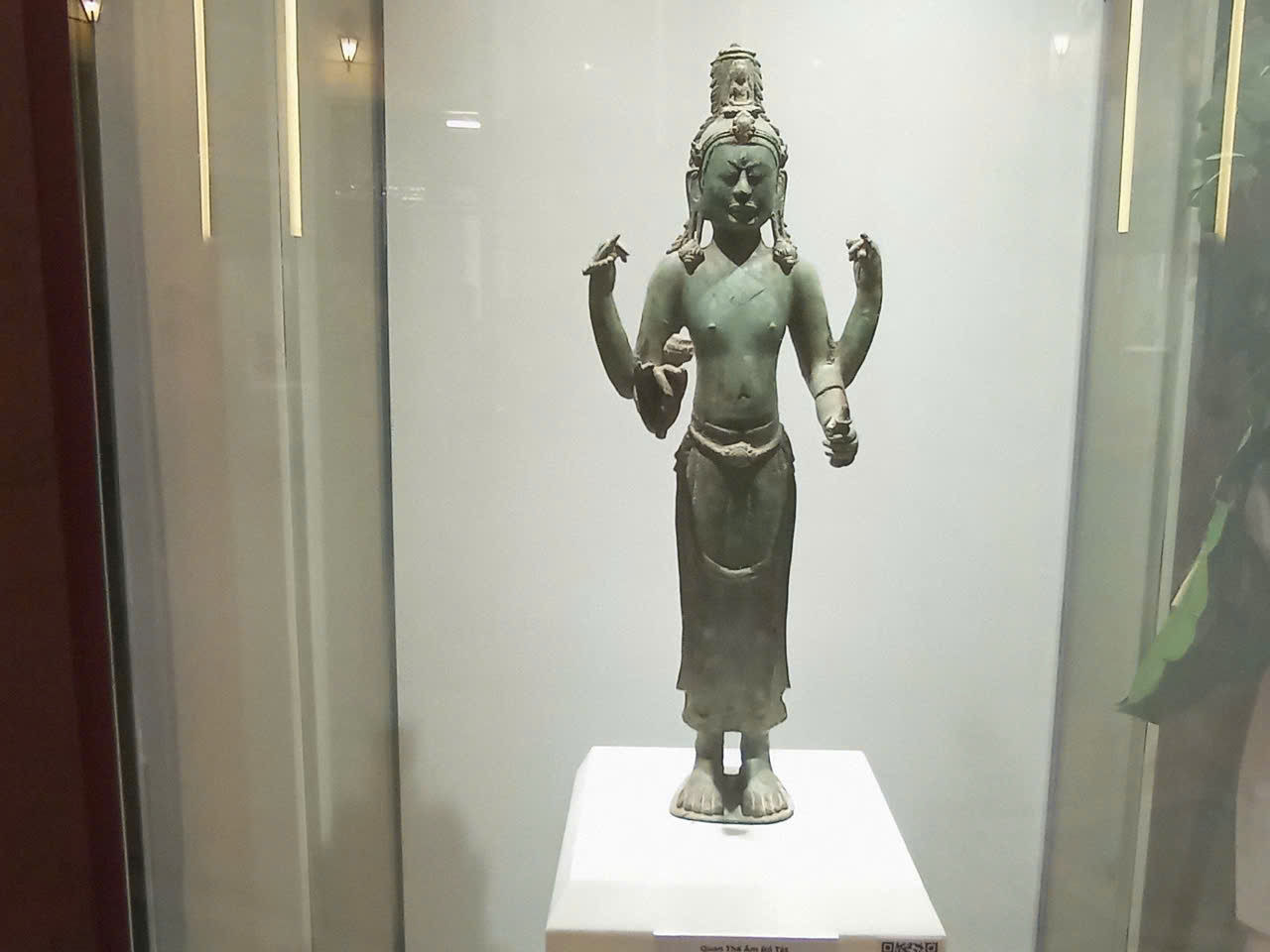
The bronze statue, weighing about 40kg, depicts the 4 arms of the Buddha, standing, and posing in a graceful manner, wearing the statue of Buddha A Di Da on her head.
painting "Trung Nam Bac Spring Garden"
The lacquer painting "Trung Nam Bac Spring Garden" by artist Nguyen Gia Tri, kept at the Ho Chi Minh City Museum of Fine Arts, was recognized as a national treasure in 2013. This is the longest work composed by the artist, completed from 1969 to 1989, with a large size of 200 x 540cm. The artifacts are displayed in digital form at the exhibition.
Painter Nguyen Gia Tri (1908 - 1993) together with To Ngoc Van, Nguyen Tuong Lan, Tran Van Can created a famous quartet of painters in the early days of Vietnamese fine arts.




